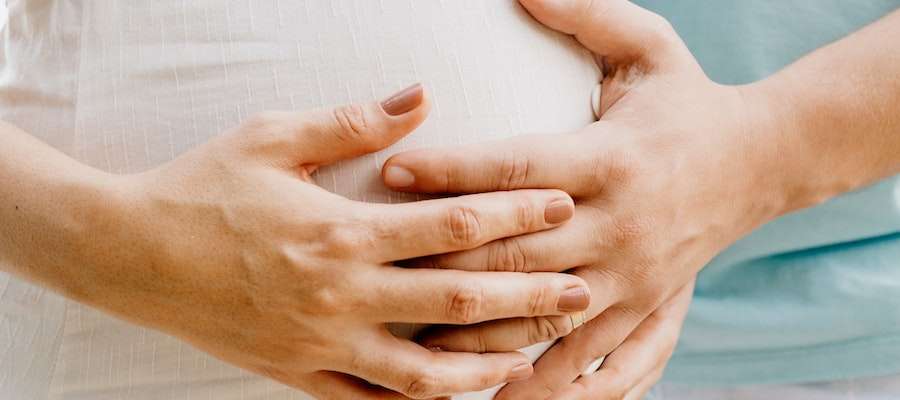Cooking sous vide is easier than its fancy name might suggest. You simply seal the ingredients in a plastic bag (you can also use a canning jar) and place them in a water bath, a combi oven, or any other cooker that can set and hold a target temperature to within a degree or two.
The sous vide cooking process will start with sealing raw or partially cooked foods in a food-safe plastic bag. The bag is placed in a water bath that’s heated between 65 to 95 degrees Celsius. As the water is constantly circulating in the water bath, there are no cold or hot spots. The food cooks precisely to the temperature that the water is set at.
How does the sous vide technique work?
The food is vacuum-sealed in a bag and then slowly cooked at gentle, controlled temperatures.
- Precise control of the degree of cooking
The correct temperature depends on the type of food. For example, whether it is meat, fish, or vegetables. Similarly, it depends on personal taste, e.g., rare or medium rare.
You can Appropriate Time For Sous Vide Depends On The Thickness And Shape Of The Food. As with all cooking techniques, including microwave, in Sous Vide, the heat penetrates the outer surface of the food and eventually reaches the inside and then heats the center. The problem arises, for example, if you want a piece of veal undercooked, i.e. veal cooked at 50°C.
It is cooked in an oven at 200°C, and when the center of the meat is at the correct temperature of 50°C, the outside of the meat is overcooked because it has been heated at 200°C for a long time.
On the other hand, if cooked at 50°C, the meat is not overdone, but the heat takes so long to penetrate and raise the temperature that the whole piece dries out. Or if it is stopped heating too early to prevent it from drying out, the center becomes raw.
With the Sous Vide technique, you cook food at the desired temperature for the whole piece. no part is overcooked or undercooked; and by sealing the food in a vacuum bag, it does not dry out, or lose nutrients or flavor during the long time needed for all the food – inside and out – to cook to the right temperature and therefore to the correct doneness.
- Precise temperature control
From a purely functional point of view, cooking is the use of heat to induce chemical reactions, with different effects taking place at different temperatures.
For example, the different proteins in egg albumen coagulate at specific temperatures, and a few degrees difference in cooking temperature will greatly affect the solidification of the egg white.
The texture of the yolk also changes as its temperature increases. Temperature affects meat in a similar way.
Cuts with high collagen content, such as breast and brisket, must be cooked longer and at a higher temperature to properly break down this tough connective tissue. In addition, cuts with little connective tissue (such as rib), may begin to toughen if cooked at these same temperatures. Just a few degrees can make a difference in a cut of meat, going from tender and moist to tough and stringy.
The art of Sous Vide cooking is to determine the perfect core temperature to achieve the desired flavor and textures. An example might be a dish containing an egg with a creamy, custard-like texture. Well, one chef may cook that egg at a core temperature of 61°C, while another may prefer to cook it at 63°C. Although this temperature difference may seem insignificant, the eggs will be drastically different from each other, making each chef’s dish unique.
The importance of precise temperature control underscores why Sage PolyScience Sous Vide immersion circulators are essential for sous vide cooking.
Unlike slow cookers on low heat, the immersion thermostat offers extremely precise temperature control, along with set-it-and-forget-it convenience. It can be set to cook food to an extremely precise core temperature – to within a fraction of a degree – with a single adjustment.
Just set the desired temperature, add the food, and walk away. Will Keep a slow cooker or slow cooker at the right temperature is virtually impossible, and you can’t get repeatable results.
In addition, because they do not circulate the cooking liquid, these appliances can create hot and cold spots that negatively affect the quality of the food. This occurs because heat is transferred 100 times faster in water than in air.
- Precise control of professional sous vide cooking time
In general, cooking time is affected by four factors:
- The core temperature at which cooking is desired.
- The heat transfer characteristics of foods.
- The amount of food to be cooked at one time and the time.
- The shape and thickness of that food.
In addition, the higher the ratio of cooking liquid to food, the faster each portion of food will reach cooking temperature. Sage PolyScience recommends that cooking bags be covered with liquid and that there be sufficient space for the bags and cooking liquid to circulate freely.
Another important advantage of slow and low-temperature Sous Vide cooking is that it is much more difficult to overcook a dish by carelessly leaving it in longer than necessary. Once the dish reaches the desired temperature, it can be kept at that temperature, moist, most delicious, and ready to serve, for a longer period of time without shrinking, drying out, or hardening.
- Improve presentation
Enjoying food, whether it’s a quick bite or a multi-course tasting menu at a fine restaurant, is a unique and very personal experience. To be truly satisfying, it must please the senses: sight, smell, taste, touch and even hearing. Who among us has not had their expectations raised by the artistic presentation, the aroma wafting from the plate, or the sizzle of a hot plate of beef, lamb, or pork?
To complement and enhance their tenderness, many chefs “finish” Sous Vide meat dishes with a brief pan-cooking, inducing a Maillard reaction, thus creating the well-known aromas and flavors that only come from high-temperature cooking. The fundamental difference with food cooked sous vide and finished this way is that the inside of the food remains exceptionally tender and moist and there is very little of the shrinkage that occurs with traditionally roasted or grilled meat.
What Are the Benefits of Sous Vide Cooking?
Sous vide is a technique to help retain natural flavors and juices in a product because they stay in the vacuum-sealed bag. Otherwise, if you cook a chicken breast in the conventional way, you throw it in boiling water and all the flavor and juices go into the water. Those juices and flavors stay inside the vacuum bag with sous vide cooking. So, it’s more flavorful. You can also add, for example, a tiny thyme stock to the bag to help flavor the product. According to research, sous vide cooking benefits include:
Consistency. During sous vide cooking, the food is cooked to a precise temperature. For example, if you set your sous vide device at 140 degrees Fahrenheit, the water is kept at this temperature. Sous vide machines generally have temperature swings of less than 0.2 degrees Fahrenheit (0.1 degrees Celsius). It can make impossible to overcook the food and also gives you greater control over the doneness of your food.
Tenderness. Tenderness is especially important when it comes to cooking meat. The most expensive cut of beef is the tenderloin, which is also the most tender. When meat cooks at temperatures above 140 to 150 degrees Fahrenheit (60 to 65 degrees Celsius), the muscle fibers shrink and lose a lot of water. This results in meat that is tough to chew. Meat that’s been sealed in a pouch and then cooked has far less shrinkage and loss of moisture, so it’s more tender. Scientists also say that as meat today is leaner than before, traditional cooking methods may result in food that is dry and tough.
Some foods, like cuttlefish, are tenderized before cooking, as they will get rubbery when cooked. When cuttlefish is cooked sous vide, the low temperatures stop the meat from shrinking and result in more tender cuttlefish.
Nutritional value. When you boil or steam vegetables, the heat damages their cell walls, and the nutrients leach out. Vegetables that are cooked with the sous vide cooking process can keep almost all their nutrients because their cell walls are kept mostly intact. Sous vide also intensifies the flavor of vegetables.
Convenience. Sous vide cooking will offer convenience, both for the food industry and the home cook. Once the food is cooked thoroughly via sous vide, it can be kept in a hot water bath for up to two hours before serving. You can also cook food using sous vide more than two weeks in advance, and then store it in the fridge. This won’t affect its freshness or flavor. This is especially useful if you have large batches of food to cook.
Why Cook Sous Vide?
Cooking sous vide is easier than its fancy name might suggest. You simply seal the ingredients in a plastic bag (you can also use a canning jar) and place them in a water bath, a combi oven, or any other cooker that can set and hold a target temperature to within a degree or two. When the food reaches your target temperature or time, you take it out, give it a quick sear or other finish, and serve it. That’s it.
The sous vide method yields results that are nearly impossible to achieve by traditional means. In the photo above, both of the tenderloins started at the same weight. The steak on the left was cooked in a pan to a core temperature of 52 °C / 126 °F, but more than 40% of the meat was overcooked. The other steak was cooked sous vide to the same temperature and then seared with a blowtorch to yield a juicier steak that is done to perfection from edge to edge.
Similarly, beef short ribs braised at 58 °C / 136 °F for 72 hours are melt-in-your-mouth tender, yet pink and juicy. And the delicate, custard-like texture of an egg poached at precisely 65 °C / 149 °F is amazing.
Sous vide is especially useful for cooking meats and seafood, for which the window of proper doneness is often vanishingly small when traditional methods are used. When you fry a piece of fish, the flesh is most succulent and tender within a very narrow temperature range. Because the cooking temperature of the pan is at least 200 °C / 392 °F hotter than the ideal core temperature of the fish, the edges will inevitably be far more cooked than the center when pan-fried.
Chicken breasts and other good poultry cuts and poultry products are often held at a target temperature for a different reason: to kill potential pathogens and improve the safety of the food.
The idea of preserving and cooking food in sealed packages is ancient. Throughout culinary history, food has been wrapped in leaves, potted in fat, packed in salt, or sealed inside animal bladders before being cooked. People have long known that isolating food from the air, accomplished more completely by vacuum sealing, can arrest the decay of food. So, Packaging food also prevents it from drying out.
Although sous vide means “under vacuum” in French, the defining feature of the sous vide method is not packaging or vacuum sealing; it is accurate temperature control. A computer-controlled heater can warm a water bath to any low temperature you set and can keep it there for a few hours, or even days if needed.
Such mastery over heat pays off in several important ways, most notably, freeing the cook from the tyranny of the clock. Traditional cooking with a range, oven, or grill uses high and fluctuating temperatures, so you must time the cooking exactly; there is little margin for error. With just a moment’s inattention, conventional cooking can quickly overshoot perfection.
When cooking sous vide, in contrast, most foods will taste just as good even if they spend a few extra minutes at a target temperature, so you can relax and devote your attention to the more interesting and creative aspects of cooking.
Precise temperature control and uniformity of temperature have two other big advantages. First, it allows you to cook food to an even doneness all the way through, with no more dry edges and rare centers. Second, you get highly repeatable results. The steak emerges from the bag juicy and pink every time.
A final important benefit is that the closed bag creates a fully humid environment that effectively braises the food, so ingredients cooked this way are often noticeably juicier and more tender. Food cooked sous vide doesn’t brown, but a simple sear adds that traditional flavor where needed so that you can have the best of both worlds.
We’ve been asked many times about the safety of cooking plastic bags. The bottom line is that bags made expressly for cooking sous vide are perfectly safe, as are oven bags, popular brands of zip-top bags, and stretchy plastic wrap such as Saran Wrap.
Plastic products are made of polyethylene. It is widely used in containers for biology and chemistry labs, and it has been studied extensively. It is safe. But, do avoid very cheap plastic wraps when cooking. These are made of polyvinyl chloride (PVC), and heating them presents a risk of chemicals leaching into the food.
Cooking sous vide isn’t complicated or expensive. In Modernist Cuisine at Home, we will guide you through the various kinds of sous vide equipment and supplies available for home cooks, including how to improvise your setup. Check back later in the week when we share such methods using equipment you probably already own.
Is Sous Vide Cooking Healthy?
Sous vide cooking is generally considered a healthy method of food preparation. This cooking technique involves vacuum-sealing food in a plastic bag and then immersing it in a water bath at a controlled temperature for an extended period. The key benefits and considerations for the healthiness of sous vide cooking include:
- Preservation of Nutrients: Sous vide cooking often involves cooking food at lower temperatures compared to traditional methods. This can help preserve the nutritional content of the food, including vitamins and minerals that may be lost during higher-heat cooking methods. In a study of cereals and legumes, those cooked sous vide had a significant increase in minerals like iron, copper, magnesium, zinc, and potassium compared to traditional cooking methods. The cereals and legumes studied include peas, red lentils, and pearl barley. Similarly, a study found that vegetables cooked sous vide had higher amounts of plant compounds, like Vitamin C (ascorbic acid) and carotenoids, compared to those cooked traditionally, such as steaming or boiling.
- Precise Temperature Control: Sous vide allows for precise temperature control, reducing the risk of overcooking or burning food. This can be particularly beneficial for delicate items, such as fish or vegetables, helping them retain their texture and flavor.
- Less Need for Added Fats: Since sous vide cooking is done in a sealed bag, there’s less need for additional fats or oils to prevent food from drying out. This can contribute to a lower overall calorie and fat content in the prepared dishes.
- Enhanced Flavors: Sous vide cooking often results in more intense and concentrated flavors as the food is cooked in its own juices, minimizing the need for excessive seasoning or added salt.
- Healthier than other cooking methods. When you cook foods using high-temperature cooking methods, like frying and grilling, potentially harmful substances like polycyclic aromatic hydrocarbons (PAHs) and heterocyclic amines (HCAs) may form. Scientists say that these substances may cause changes in your DNA that may increase your cancer risk.
However, it is important to note that like any cooking method, sous vide is part of an overall diet, and its healthiness can depend on the specific choices made during the cooking process. Here are a few considerations:
- Quality of Ingredients: The healthiness of sous vide dishes depends on the quality of ingredients used. Choosing fresh, high-quality ingredients is essential for a nutritious meal.
- Food Safety: While sous vide cooking is generally safe, it’s crucial to follow proper food safety guidelines, including ensuring that the food reaches a safe internal temperature to kill any harmful bacteria.
- Balanced Diet: No single cooking method can guarantee a healthy diet. It’s essential to incorporate a variety of cooking techniques and a balanced selection of foods into your overall eating habits.
FAQ
What is the cooking technique for sous vide?
In the sous vide technique food is vacuum-sealed in a cooking pouch and heated at a precise temperature in a water bath. Instead of relying on perfect timing, sous vide relies on precise temperature control. Simply set the machine and the technique will deliver consistent, perfect results each and every time.
What are modern cooking techniques?
Sous vide cooking is a new method of preparing food that can be cooked for long periods of time at a constant temperature. The food is first vacuum sealed in a plastic bag and then inserted into a warm water bath at a constant temperature for a pre-determined set of times.
How do restaurants use sous vide?
Sous vide cooking is a food preparation method where chefs place an immersion circulator into the water to slow-cook vacuum-sealed food. The immersion circulator offers precise temperature control, so the food cooks consistently throughout.
In summary, sous vide cooking can be a healthy and effective method, especially when considering its benefits in nutrient retention and precise temperature control. However, as with any cooking method, it’s essential to make mindful choices in ingredient selection and follow proper food safety practices.
kidsmodelistamagazine



































